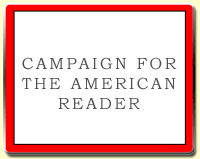 Penelope Lively’s latest book, Life in the Garden, is partly a memoir of her own life in gardens, and also a wise, engaging and far-ranging exploration of gardens in literature.
Penelope Lively’s latest book, Life in the Garden, is partly a memoir of her own life in gardens, and also a wise, engaging and far-ranging exploration of gardens in literature.At the Waterstones blog she tagged five of her favorite gardens in literature, including:
To The LighthouseRead about the other entries on the list.
Virginia Woolf
For Virginia Woolf, the garden in To The Lighthouse becomes again a signifier for time passing, but in an utterly different way. The Hebridean garden of the Ramsay family - their second home, as we would call it today - is revisited by the children who holidayed there, now adults, and is made to speak for the passage of time: "Poppies sowed themselves among the dahlias; the lawn waved with long grass; giantartichokes towered among the roses; a fringed carnation flowered among the cabbages..." Neglect, the ravages of untrammelled growth, and the garden is summoned up with Woolf's eloquence - language that is emotive, evocative. Elsewhere, too, she conjures up gardens - in The Waves, in the short story "Kew Gardens," but these in that exaggerated "stream of consciousness" style that makes them too elusive, for me. Interestingly, Woolf was herself a practical, hands-on gardener, and the garden that she and Leonard Woolf created at Monks House, in Rodmell, near Lewes, survives today, owned by the National Trust.
To the Lighthouse appears among Mauro Javier Cardenas's nine notable novels with really long sentences, Rachel Cusk's six favorite books, Helen Dunmore's six best books, Annie Baker's six favorite books, Meg Wolitzer's five favorite books by women writers, Laura Frost's top 10 best modernist books, the Barnes & Noble Review's list of five unforgettable fathers from fiction, Margaret Drabble's top ten literary landscapes, the American Book Review's 100 best last lines from novels, Amity Gaige's best books, and Adam Langer's best books.
--Marshal Zeringue



